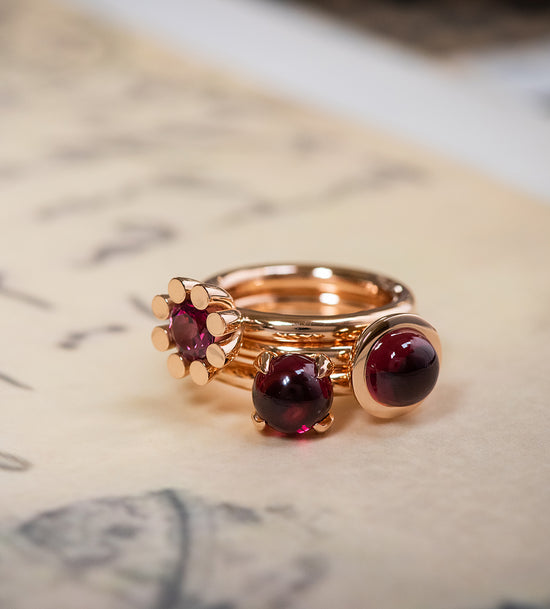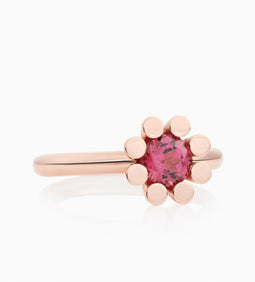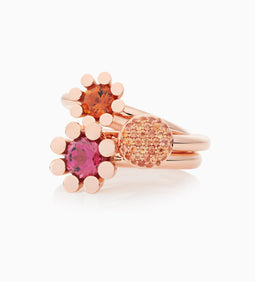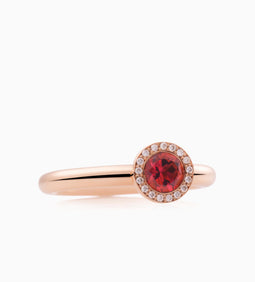
Light in the Dark
According to legend, rhodolite was attached to the beams of Noah’s ark, helping to illuminate dark, stormy seas. Thanks to its inner fire, it was always believed to protect against evil and bring light into the world. In modern times, its warm glow made rhodolite a symbol of empathy and friendship. As the gem for a second wedding anniversary, it symbolizes a firm commitment to love and marriage.

A very special garnet
Rhodolite is a mineral from two types of garnet - almandite and pyrope - which give rise to its gorgeous colors. It is an ‘eye-clean’ gem, meaning inclusions cannot be seen by the naked eye. However, deep within the stone are very fine threads of crystals - ‘silk inclusions’ - which give the rhodolite its beautiful glow. Perhaps it was its mesmerizing warmth that crowned the rhodolite the “star of the garnet family.”
On the Mohs scale of hardness, rhodolite is 7 to 7.5.

Origion
Major deposits of rhodolite exist in Brazil, India, Sri Lanka, Tanzania, Madagascar and Zimbabwe. North Carolina, USA, where the gem was originally found, also still yields rhodolite, but much less than in the past.






















